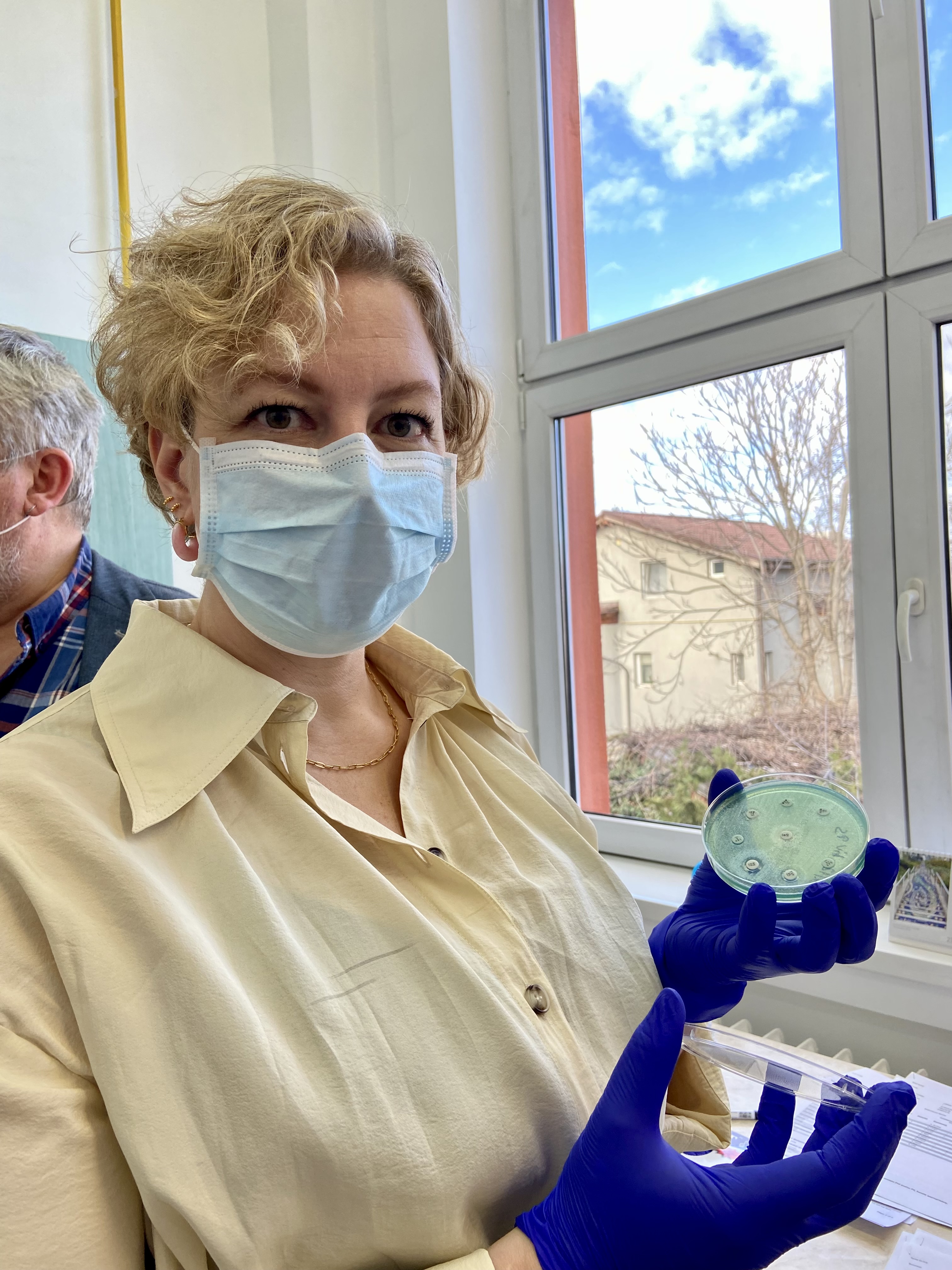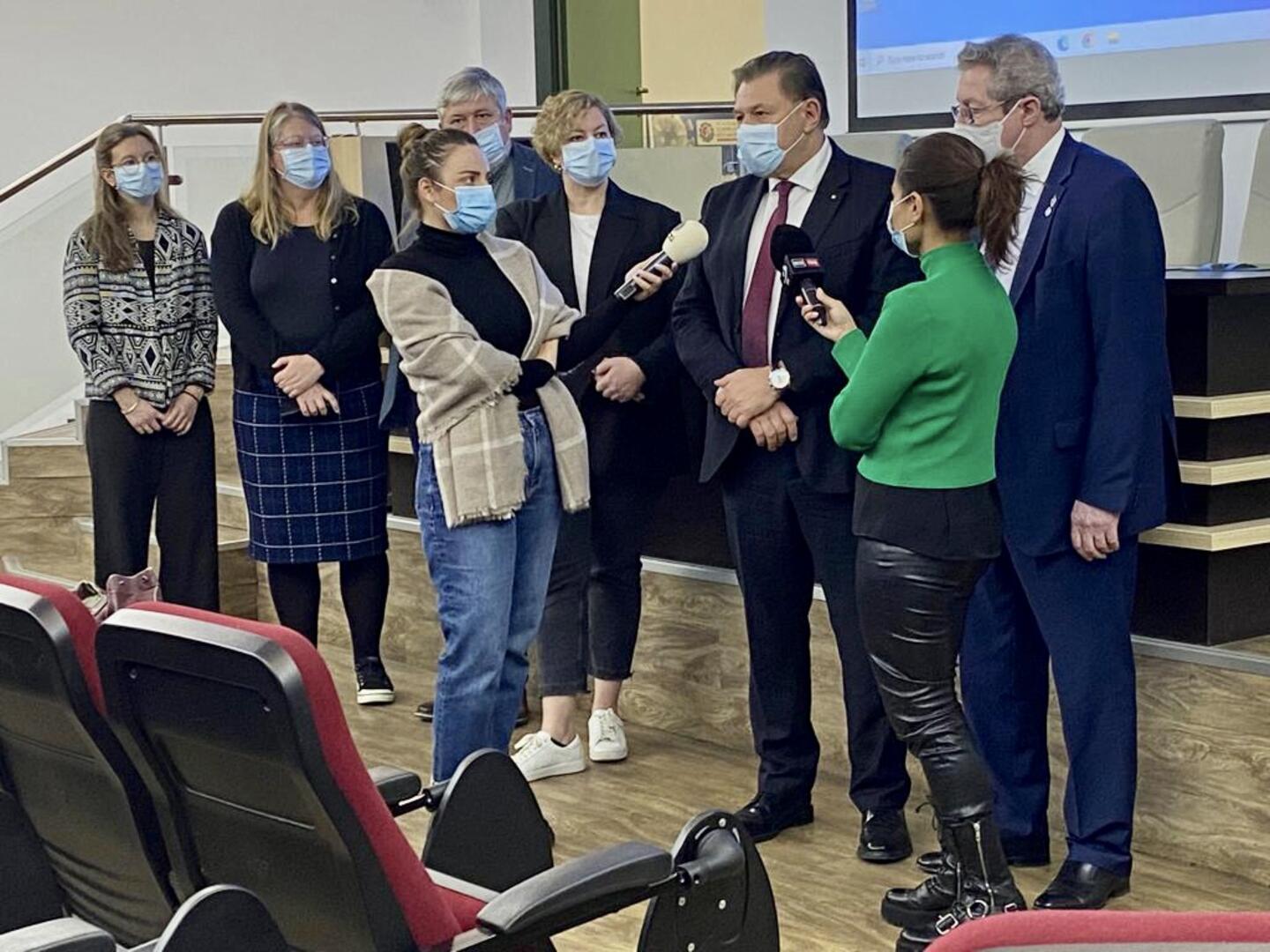- “This has been a success story”, says Senior Physician Miriam Sare, who has led the efforts of the Norwegian Institute of Public Health (NIPH) in the project.
“They have emphasized increased knowledge about and attention to antibiotic resistance. They have made this knowledge accessible in the form of guidelines and recommendations for the health service. They promote this through a national action plan that includes training of healthcare personnel in antibiotic resistance and hospital infections. In addition, there will be information activities aimed at the general public. Romania has planned, led, and executed these efforts,” says Sare.
Well-developed action plan
The project is led by the National Institute of Infectious Diseases in the capital Bucharest. The institute specialises in infectious diseases and is both a hospital with 700 beds for infectious patients and a national institution for research and dissemination of knowledge in infectious diseases.
The project began with a draft action plan and guidelines for good practice, which were discussed in consensus meetings with stakeholders and experts in both veterinary medicine and environment.

Dr. Mariana Buzea at the microbiology department at Elias University Hospital in Bucharest demonstrates multi-resistant bacteria that have become part of everyday life at the hospital. Photo: Miriam Sare/Institute of Public Health
Three comprehensive guidelines
NIPH has been involved as an adviser in the development of the guidelines which will constitute the practical tools to ensure efficient and sustainable implementation of the national action plan.
The first guideline is about antibiotic use in hospitals.
“It is a lot of work when you have to build up a guideline from scratch. You cannot simply copy our guidelines. The Romanians use different antibiotics than Norway because we have access to different antibiotics, we have different treatment traditions, and we have different resistance profiles,” explains Sare.
The second guideline concerns infection control in hospitals. It will contribute to healthcare personnel increasing their level of knowledge about hospital infections. Preventing the spread of bacteria in hospitals is an important part of the work on both antibiotic resistance and patient safety.
The third guideline concerns laboratory diagnostics. It is a comprehensive document created by a group of medical microbiologists from different parts of the country. Romania has many laboratories, but several lack personnel, equipment, and/or expertise. It is a goal that the guideline should become national and constitute a minimum standard for all laboratories in Romania, says Sare.
The pandemic delayed the progress
Six hospitals from all over Romania were selected early on as pilot hospitals. They performed a situational analysis regarding how antibiotic resistance is tested, how hospital infections are monitored, and how antibiotics are prescribed. But much of the pilot work was delayed due to the covid-19 pandemic, which required the infectious disease institute to reorganize and concentrate on patients.
“The pandemic, however, did not halt the progress on the situation analysis. The Romanians dedicated evenings and weekends to complete it”, says Sare.
After the situation analysis had been carried out, the action plan was revised.
Webinar for 300 doctors
As part of competence building, the Romanians are developing training curricula for healthcare personnel on antibiotic resistance and hospital infections. The trainings will be made available on an e-learning platform. A webinar was held over three days in the autumn of 2022 for about 300 doctors from all over the country, where NIPH contributed to the lectures, with experience and practices from Norway.
During the project, several physical professional meetings were planned in Romania. These had to be held virtually instead, due to the pandemic.
“We still achieved a lot of good collaboration digitally. But when we were finally able to meet physically towards the end of the project, we discovered how useful it would have been to have physical meetings along the way,” says project manager Sare.
 Senior doctor Miriam Sare visiting to the microbiology department at the Elias University Hospital in Bucharest. Photo: Mari Molvik
Senior doctor Miriam Sare visiting to the microbiology department at the Elias University Hospital in Bucharest. Photo: Mari Molvik
Mutual benefits
In November 2022 NIPH hosted 22 Romanian clinicians and two project experts from the Romanian Public Health Institute. The Romanians toured two Norwegian hospitals and met with Norwegian subject-matter experts. The result was mutual learning, with in-depth discussion, and the pleasure of getting to know each other.
“In addition to the fact that it is inspiring to meet committed colleagues with lots of knowledge, we can learn a lot from a country with bigger challenges than ourselves,” says Miriam Sare.
“We know a lot about the situation in Romania from European reports and research articles, but it is something completely different to meet and hear how they experience it in everyday life at the hospital, and how they work, think and prioritize. We have a good situation in Norway now, but that can change quickly, and we must be as well prepared as we can,” she adds.
This article was first published in Norway by the Norwegian Institute of Public Health.

